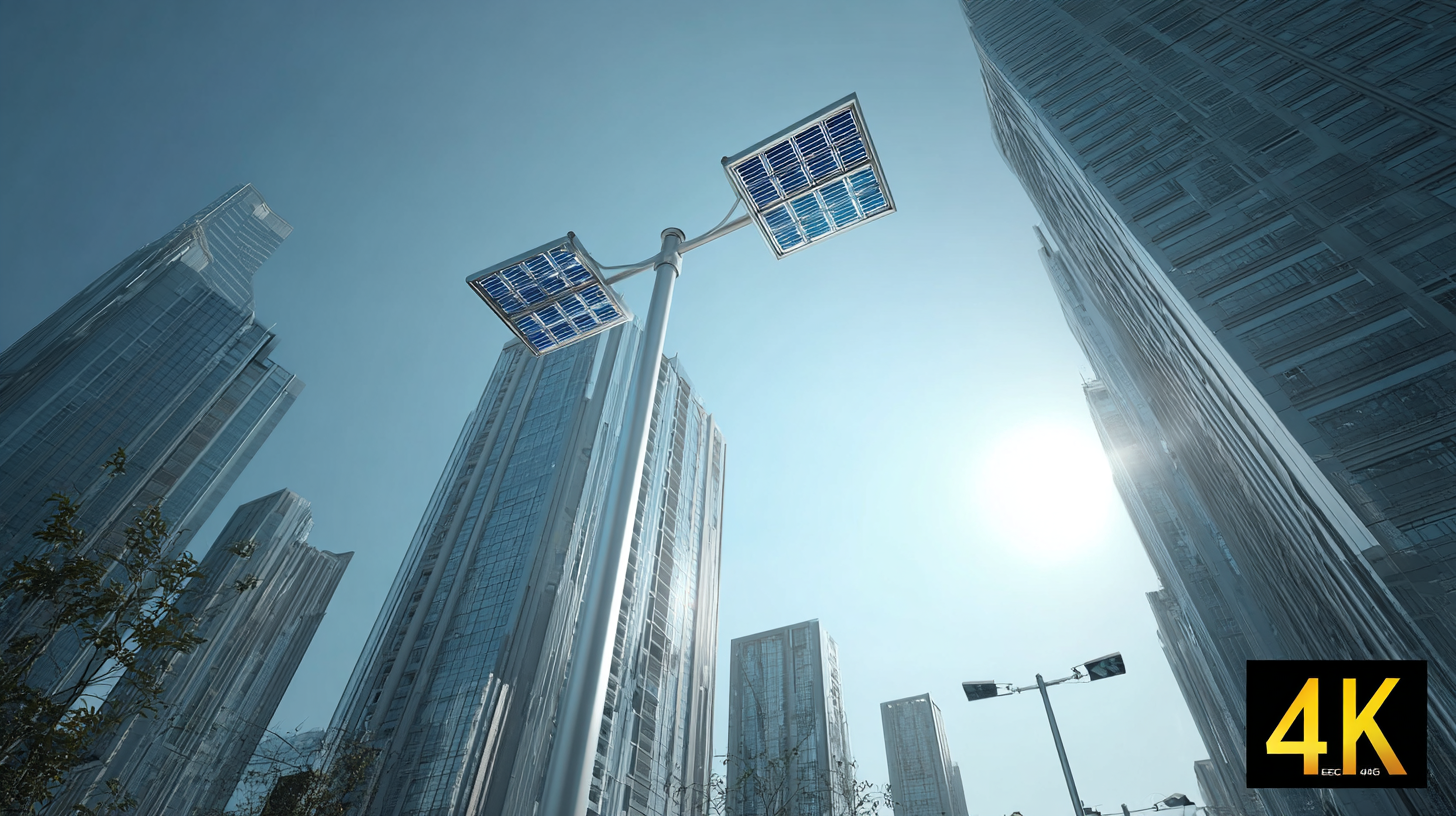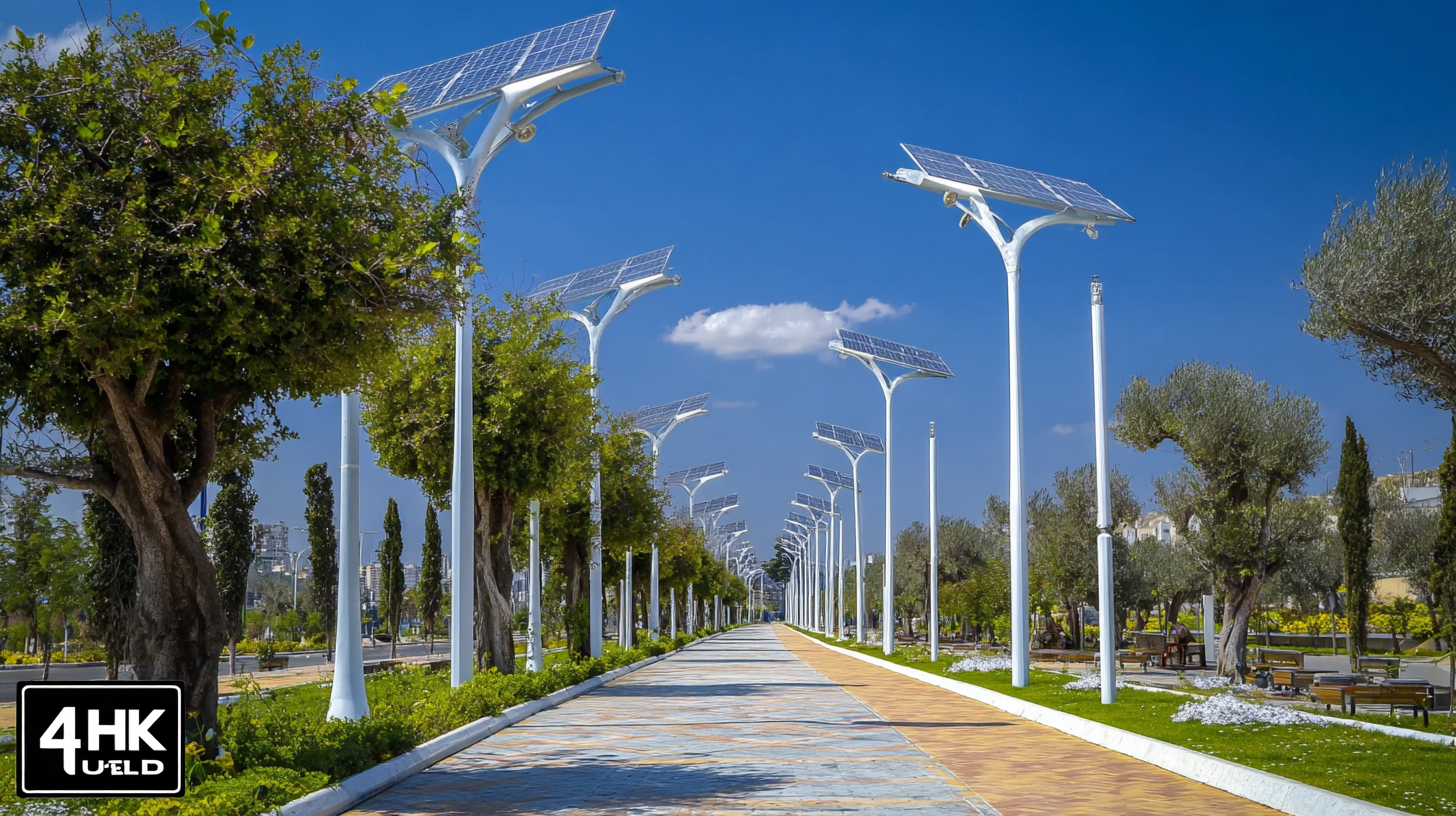Innovative Applications of the Best Solar Street Light in Urban Infrastructure Enhancement
As urban areas continue to expand, the need for innovative and sustainable solutions to enhance infrastructure becomes increasingly critical. One of the most promising advancements in urban development is the integration of solar street lights, which not only illuminate public spaces but also contribute to environmental sustainability. These solar street lights harness solar energy, reducing reliance on conventional power sources and lowering energy costs for municipalities. However, as with any emerging technology, there are challenges that need to be addressed to maximize their effectiveness.

This blog will explore the various problems associated with solar street light implementation, including initial investment costs, maintenance issues, and varying performance based on geographic locations. By identifying and understanding these challenges, we can better leverage the potential of solar street lights to transform urban infrastructure and promote a greener future.
The Evolution of Solar Street Lighting in Urban Areas: A Global Perspective
The evolution of solar street lighting has marked a significant turning point in urban infrastructure, reflecting a commitment to sustainable development across the globe. In many cities, traditional street lighting systems have been replaced with innovative solar alternatives that harness renewable energy, drastically reducing carbon footprints. This shift is not merely about upgrading technology; it represents a broader movement towards enhancing livability and resilience in urban spaces.
Globally, the adoption of solar street lights varies, with regions leading in different aspects of their implementation. In Europe, cities are integrating smart technology with solar lighting, enabling features such as adaptive brightness and connectivity to urban management systems. Meanwhile, in developing countries, solar street lights provide an essential solution to inadequate electricity infrastructure, improving safety and accessibility in communities that previously lacked reliable night-time illumination. By analyzing these diverse applications, it becomes clear that solar street lighting is not just an environmental choice but a transformative tool for urban enhancement, promoting equity and sustainability in city planning.
Innovative Applications of Solar Street Lights in Urban Areas
This chart illustrates the adoption rate of solar street lights in urban infrastructure from 2015 to 2023.
Key Benefits of Solar Street Lights: Cost Savings and Environmental Impact
Solar street lights represent a significant step towards enhancing urban infrastructure while addressing environmental concerns. One of the most notable benefits of solar-powered street lights is their cost-saving potential. By utilizing solar energy, cities can significantly reduce their electricity bills, which can be reallocated to other essential services. Additionally, the maintenance costs associated with traditional street lighting, often impacted by frequent bulb replacements and electrical issues, are considerably lower with solar options, leading to long-term financial savings.

The environmental impact of transitioning to solar street lights is equally impressive. These systems harness renewable energy, thereby reducing reliance on fossil fuels and decreasing greenhouse gas emissions. As urban areas continue to expand, the adoption of solar lighting contributes to a sustainable approach in city planning, promoting greener communities. Initiatives, such as pilot programs in places like Beachwood, showcase how urban centers can innovate by adopting this technology, ultimately benefiting both municipal budgets and the environment. Embracing solar street lights aligns with global efforts to create sustainable urban environments, ensuring a brighter future for both cities and their inhabitants.
Smart Technology Integration in Solar Street Lighting Systems
Smart technology integration in solar street lighting systems is revolutionizing urban infrastructure, making cities more sustainable and efficient. The latest advancements in smart technology allow these solar street lights to connect to the internet, enabling real-time data monitoring and management. This connectivity encourages cities to optimize energy consumption, as lights can adjust brightness based on ambient light levels or human presence, significantly reducing energy waste.
Moreover, smart solar street lights can incorporate additional features such as integrated CCTV cameras and sensors for air quality measurement, providing multiple functions within a single system. The data collected can aid city planners in making informed decisions, enhancing public safety, and improving overall urban living conditions. As cities continue to grow, the integration of smart technology in solar lighting is not just beneficial; it is essential for creating a resilient and adaptive urban infrastructure.
Case Studies: Successful Solar Street Light Implementations in Cities Worldwide
Cities worldwide are increasingly embracing solar street lights as part of their urban infrastructure enhancements. These innovative solutions not only provide sustainable lighting but also significantly reduce energy costs. For instance, in Los Angeles, a solar street lighting project led to a 50% reduction in energy consumption while improving safety in nighttime environments. Similarly, cities like Barcelona and Nairobi have implemented solar lights in public spaces, benefiting from reduced maintenance costs and increased public satisfaction.

When considering solar street light implementation, cities should prioritize locations that mitigate light pollution and enhance visibility for pedestrians and drivers. Utilizing smart technology, such as motion sensors, can also improve energy efficiency by activating lights only when needed. It’s essential to engage with local communities to gather insights and encourage a sense of ownership over these projects.
Moreover, successful case studies highlight the importance of collaboration with local governments and organizations. In Singapore, for instance, partnerships between the government and private sector have driven innovation, leading to the deployment of aesthetically pleasing solar lights that complement the city’s vision. By harnessing local resources and expertise, cities can ensure these projects are not just functional but also integrated into the urban landscape effectively.
Future Trends: The Role of Solar Street Lights in Smart Cities and Sustainability
As urban areas continue to grow, the integration of solar street lights in smart city initiatives becomes increasingly vital. These innovative lighting solutions not only enhance urban infrastructure but also play a pivotal role in promoting sustainability. By harnessing solar energy, cities can reduce their dependency on traditional energy sources, cutting down on greenhouse gas emissions and energy costs. The use of solar street lights contributes to creating a cleaner environment while providing consistent illumination that promotes safety and security in public spaces.
Moreover, the future trends in smart cities highlight the importance of interconnected systems, where solar street lights can act as nodes in a larger network. Equipped with smart technology, these lights can collect data on traffic patterns, air quality, and pedestrian activity, providing valuable insights for city planners. This data-driven approach allows for more informed decisions about urban development and resource allocation, ultimately leading to more resilient and responsive urban ecosystems. As we progress toward smarter and more sustainable cities, the adoption of solar street lights will undeniably be a crucial element in shaping urban landscapes for generations to come.
